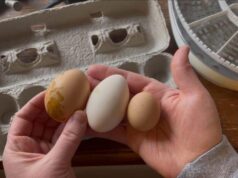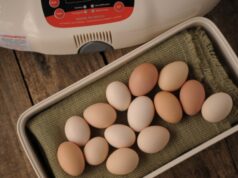For chicken lovers and poultry enthusiasts, understanding the ins and outs of nesting boxes can be a game-changer for your flock’s happiness and productivity. Whether you’re a seasoned farmer or a backyard chicken keeper, having a thorough comprehension of nesting box FAQs is essential. In this article, we’ll explore the many aspects of nesting boxes, addressing common questions and offering tips to ensure your chickens are content and productive.

What is a Nesting Box?
A nesting box is a designated space where chickens lay their eggs. These boxes provide a safe, comfortable, and private environment for hens to lay their eggs without stress. Proper nesting boxes can significantly impact the quality and quantity of eggs your chickens produce. To get a better understanding of what a nesting box is, you can visit Longbourn Farm for more detailed information.
Why Are Nesting Boxes Important?
Nesting boxes are crucial because they encourage your hens to lay eggs in a specific, controlled environment. This not only makes egg collection easier but also keeps the eggs clean and reduces the risk of breakage. Nesting boxes also provide a sense of security for the hens, which can lead to more consistent laying.
Encouraging Egg Laying
By offering a comfortable and safe space, nesting boxes encourage hens to lay eggs more regularly. Stress-free hens are generally healthier and more productive.
Maintaining Egg Quality
Correctly designed nesting boxes help maintain the cleanliness and quality of eggs, reducing the likelihood of contamination and breakage.
How Many Nesting Boxes Do I Need?
Determining the number of nesting boxes you need depends largely on the size of your flock. A good rule of thumb is to provide one nesting box for every 3 to 4 hens. This ratio generally ensures that there are enough boxes to accommodate all the hens without causing competition or stress.
How to Choose the Right Nesting Box?
When selecting a nesting box, consider the size, material, and placement. The box should be large enough for your hens to comfortably enter and turn around in. Popular materials include wood, plastic, and metal, each offering different benefits. For more ideas, you can check out some creative designs on Pinterest.
Size Matters
Ensure the box is spacious enough for your hens to move comfortably, typically about 12x12x12 inches for standard breeds.
Material Considerations
Wood is a traditional option, offering warmth and natural insulation. Plastic and metal are easier to clean and can be more durable.
Where Should I Place My Nesting Boxes?
Placement of nesting boxes is critical for the comfort and productivity of your hens. Boxes should be placed in a quiet, dark area of the coop to provide a peaceful environment. Ensure they are elevated from the ground to prevent dampness and pests.
How to Maintain Nesting Boxes?
Regular maintenance of nesting boxes ensures hygiene and comfort for your hens. Clean the boxes weekly, replacing bedding to prevent odors and infestation. Check for any damage and repair as needed to maintain a safe environment for your flock.
What Bedding is Best for Nesting Boxes?
Choosing the right bedding is crucial for the comfort of your hens and the cleanliness of the eggs. Popular choices include straw, wood shavings, and shredded paper, each providing different levels of comfort and absorption.
Straw and Hay
Straw and hay are popular choices due to their softness and natural appeal. However, they can harbor pests if not changed regularly.
Wood Shavings
Wood shavings are absorbent and can help control odors. They are easy to clean and replace, making them a practical choice for many chicken keepers.
How to Handle Common Nesting Box Problems?
Common issues with nesting boxes include hens refusing to use them, egg eating, and pests. Address these problems by ensuring the boxes are clean, comfortable, and well-placed. You can also try using dummy eggs to encourage laying and deter egg eating.
Encouraging Box Use
If hens are not using the boxes, check for stress factors such as noise or overcrowding. Adjustments in placement or environment may be necessary.
Dealing with Pests
Regular cleaning and pest control measures can prevent infestations. Ensure your coop is well-ventilated and free from dampness. For more ideas on ventilating your nesting boxes, you can visit ventilating nesting boxes.
Are There Seasonal Considerations for Nesting Boxes?
Seasons can affect how you manage your nesting boxes. In colder months, ensure the boxes are warm and dry, while in summer, focus on ventilation and cooling. Adjust bedding and box placement accordingly to match seasonal needs. For further reading on seasonal changes, check out seasonal changes in nesting.

FAQs
What if my chickens won’t lay in the boxes?
If your chickens are not laying in the boxes, ensure they are placed correctly and provide enough comfort and privacy. You can learn more about this issue by visiting chickens not laying.
Can ducks use the same nesting boxes as chickens?
While ducks can use chicken nesting boxes, they may prefer larger spaces. Adjust the size and placement if you have a mixed flock. For more on this topic, visit ducks using boxes.
Is it okay to place nesting boxes under roosts?
Placing nesting boxes under roosts is generally not recommended, as it can lead to soiling. It’s better to place them away from roosts. For more details, see nest boxes under roosts.
In conclusion, understanding and implementing effective nesting box practices can greatly enhance your experience as a chicken keeper. By providing a safe, clean, and comfortable environment for your hens, you can ensure a steady supply of fresh, high-quality eggs. With the right knowledge and tools, managing nesting boxes can be a rewarding aspect of poultry farming.
This article contains affiliate links. We may earn a commission at no extra cost to you.











